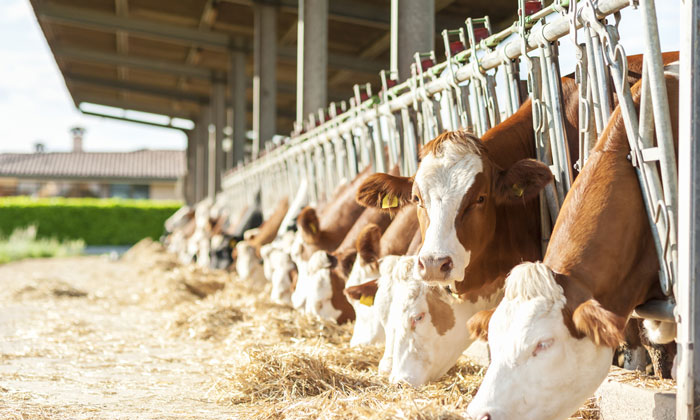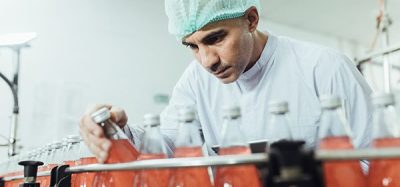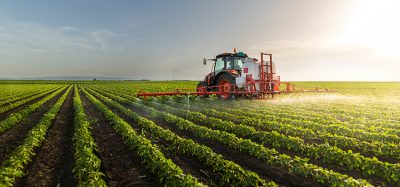New research strengthens animal research at the University of Hohenheim
- Like
- Digg
- Del
- Tumblr
- VKontakte
- Buffer
- Love This
- Odnoklassniki
- Meneame
- Blogger
- Amazon
- Yahoo Mail
- Gmail
- AOL
- Newsvine
- HackerNews
- Evernote
- MySpace
- Mail.ru
- Viadeo
- Line
- Comments
- Yummly
- SMS
- Viber
- Telegram
- Subscribe
- Skype
- Facebook Messenger
- Kakao
- LiveJournal
- Yammer
- Edgar
- Fintel
- Mix
- Instapaper
- Copy Link
Posted: 5 July 2017 | New Food, University of Hohenheim | No comments yet
Studies by the University of Hohenheim in Stuttgart, Germany, have shown that when plant-based phosphorus is processed in the digestive system, substances are produced that have hardly been investigated and could have benefits for animal health.


Phosphorus is an indispensable nutrient for humans, animals, and plants. But especially livestock usually cannot satisfy their needs with only plant-based feed. To compensate, farmers add phosphorus, which is mined as rock phosphate like salt – which has two disadvantages:
- The first is that global phosphorus supplies are quickly dwindling.
- The second is that studies by the University of Hohenheim in Stuttgart, Germany, have shown that when plant-based phosphorus is processed in the digestive system, substances are produced that have hardly been investigated and could have benefits for animal health. The newly founded DFG research unit “P-FOWL” is therefore using fowl as an example for looking into the effects of phosphorus from plant sources on the animal, how exactly livestock process the valuable nutrient in their digestive tracts, and how these processes can be made even more efficient. The German Research Foundation (DFG) is funding this project with around 2 million Euros.
A laying hen in Germany lays on average almost 300 eggs each year. This is a performance level for which the animal needs phosphorus, among other nutrients.
In relative terms, its phosphorus needs are much higher than those of humans. The reason: “People grow over a relatively short period of their lives and then need less phosphorus to maintain their health. Laying hens, in contrast, have a long growth phase and also produce eggs; the body of a laying hen performs like that of a professional athlete,” explained the director of the Department of Animal Nutrition at the University of Hohenheim, Prof. Dr. Markus Rodehutscord:
Because the animals cannot obtain sufficient amounts of phosphorous from plant-based feed, phosphorus from mineral stores are added – stores that could be used up in the next 100 years.
Even now it is increasingly difficult to reach the limited stores of phosphorus, which can only be found in a few places around the world. The quality of the mined phosphorus is becoming worse, and mining it as a feed additive and fertiliser is increasingly difficult. In Europe, there are hardly any deposits, and agriculture is dependent on imports.
Researchers at the University of Hohenheim are now working on this problem in an interdisciplinary team. “Our findings are intended to support livestock in using phosphorus contained in their feed as efficiently as possible so that less phosphorus from mineral stores needs to be added to the feed.”
For this, though, the research team first needs to know exactly how the valuable mineral is processed in the animals’ digestive tracts.
Phosphorus processing is complicated but important
One reason that livestock cannot draw enough phosphorus from their feed is the complicated structure of the plant-based phosphorus reserve phytate. Junior Professor Dr. Jana Seifert from the Institute of Animal Science at the University of Hohenheim explained: “In plants, the phosphorus elements are bound in a ring structure that has to be broken down in the digestive tract by enzymes. The digestive systems of many livestock animals such as pigs and fowl are just as poorly suited for this as that of humans.”
As the preliminary project microP found out, this is a serious disadvantage for the animals. Experiments with pigs showed that phosphorus deficiency negatively impacts[M.R.3] the responsiveness of the immune system[KF4] . The scarce nutrient is also essential for other processes related to hormonal balance and energy metabolism, emphasized Junior Professor Dr. Seifert: “If the intestinal micro-organisms don’t get enough phosphorus, they are less efficient at processing food and the body therefore has less energy.”
The research group now wants to use high-tech methods to find out which bacteria contributing to breaking up the phosphorus stores and what exactly their tasks are. The microbiology expert hopes: “If we can clarify the role of micro-organisms, then in the long-term we could influence them to make organic phosphorus easier to use for animals.”
Focus on laying hens and quails
The research group wants to built on previous knowledge to better understand the processing of phosphorus in the intestines. For this, they have selected a particularly interesting livestock animal: Laying hens.
Prof. Dr. Rodehutscord: “Throughout their lives, laying hens go through significant changes in their physical development. They grow quickly and then lay many eggs before egg production decreases. This means that their need for nutrients like phosphorus and calcium varies greatly throughout their lives.
Calcium and phosphorus are important nutrients for bone growth and making egg shells. Laying hens therefore need to have enough of both. This means there is a considerable demand for phosphorus with the Federal Statistical Office counting around 40 million[KF5] [M.R.6] laying hens in German stalls in the first quarter of 2017.
When breaking down phosphorus from plant-based sources, however, different compounds can form, e.g. Myo-Inositol. These compounds can influence intestinal bacteria and animal well-being but have thus far been subject to very little research.
Thanks to the University of Hohenheim’s departmental structure in animal science, the research group will have an advantage in the investigations, stated Junior Professor Dr. Seifert: “Experts for animal nutrition, microbiota, genetics, and physiology will work in the research group on the same animals, which will be kept at the University of Hohenheim’s Agricultural Experiment Station. This will make the findings much more precise and comparable.”
Genetics as a factor
Another insight gained from the preceding project: The group supporting geneticist Prof. Dr. Bennewitz discovered that genes influence how well an animal can break down the plant-based phosphorus. To look at this in more detail, samples from experiments with quails in an earlier project will be used.
How phosphorus is released and processed and what effects it has on the animals’ metabolism are additional questions that will be pursued in six sub-projects in the Hohenheim livestock science research group. The group is also supported by two sub-projects at the Leibniz Institute for Farm Animal Biology in Dummerstorf, where all findings will be brought together with a systems biology approach.
The insights about links between genetics and phosphorus processing could later benefit animal breeding according to Prof. Dr. Rodehutscord: “If the role of genes in phosphorus processing is clarified, then it could be possible in the longer term to select specific animals for breeding that have the right genes in this area.”








